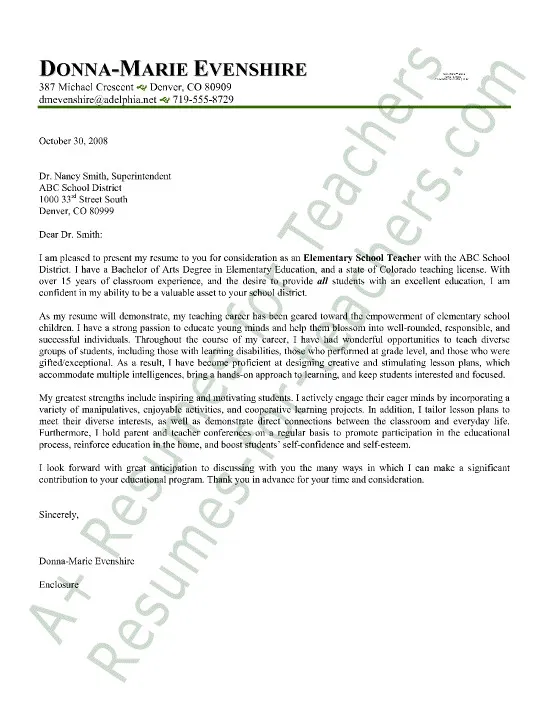Understanding the Importance of a Teaching Cover Letter
A teaching cover letter is more than just a formality; it’s your first opportunity to make a strong impression on a potential employer. It’s a chance to showcase your personality, teaching philosophy, and passion for education in a way that a resume alone cannot. A well-crafted cover letter can significantly increase your chances of landing an interview and ultimately securing your dream teaching position. It provides context to your resume and allows you to explain why you’re the ideal candidate for the role. In a competitive job market, a compelling cover letter can set you apart from other applicants and demonstrate your commitment to the profession.
Why a Cover Letter Matters for Teachers
For teachers, a cover letter is particularly important because it allows you to articulate your teaching philosophy, which is a crucial element of your professional identity. This is the document where you demonstrate what drives you as an educator and how you approach the classroom. Furthermore, it’s a chance to highlight your skills and experience, and connect them to the specific needs of the school and the open teaching position. The cover letter is where you can build a narrative around your qualifications, connecting your past experiences to the present opportunity. You can show the hiring manager what makes you unique.
Showcasing Your Teaching Philosophy

Your teaching philosophy is the heart of your cover letter. It’s where you outline your beliefs about education, your approach to student learning, and your vision for the classroom environment. Clearly articulate your commitment to student success, incorporating examples of how you create a positive and engaging learning environment. Show how you cater to diverse learners and promote critical thinking, creativity, and collaboration. Your philosophy should align with the school’s mission and values. Demonstrate your understanding of the role of a teacher in shaping young minds. This part of the letter should reflect your passion for teaching.
Key Components of a Winning Teaching Cover Letter
A successful teaching cover letter has several key components that work together to present you as the best candidate. These elements should be clear, concise, and compelling, drawing the reader in and keeping their attention. The structure includes a formal tone, professional presentation, and careful attention to detail. It is your introduction to the hiring team, and as such, every part of your letter needs to show your skill, experience, and passion for education. Following these guidelines will help you make a strong first impression.
Contact Information and Date
Begin your cover letter with your contact information, including your full name, address, phone number, and professional email address. Make sure your contact information is easy to read and up-to-date. Include the date, as it’s a common practice for professional correspondence. Place this information at the top of the letter, either on the left or right side, to ensure it is clear and easily accessible.
Addressing the Hiring Manager
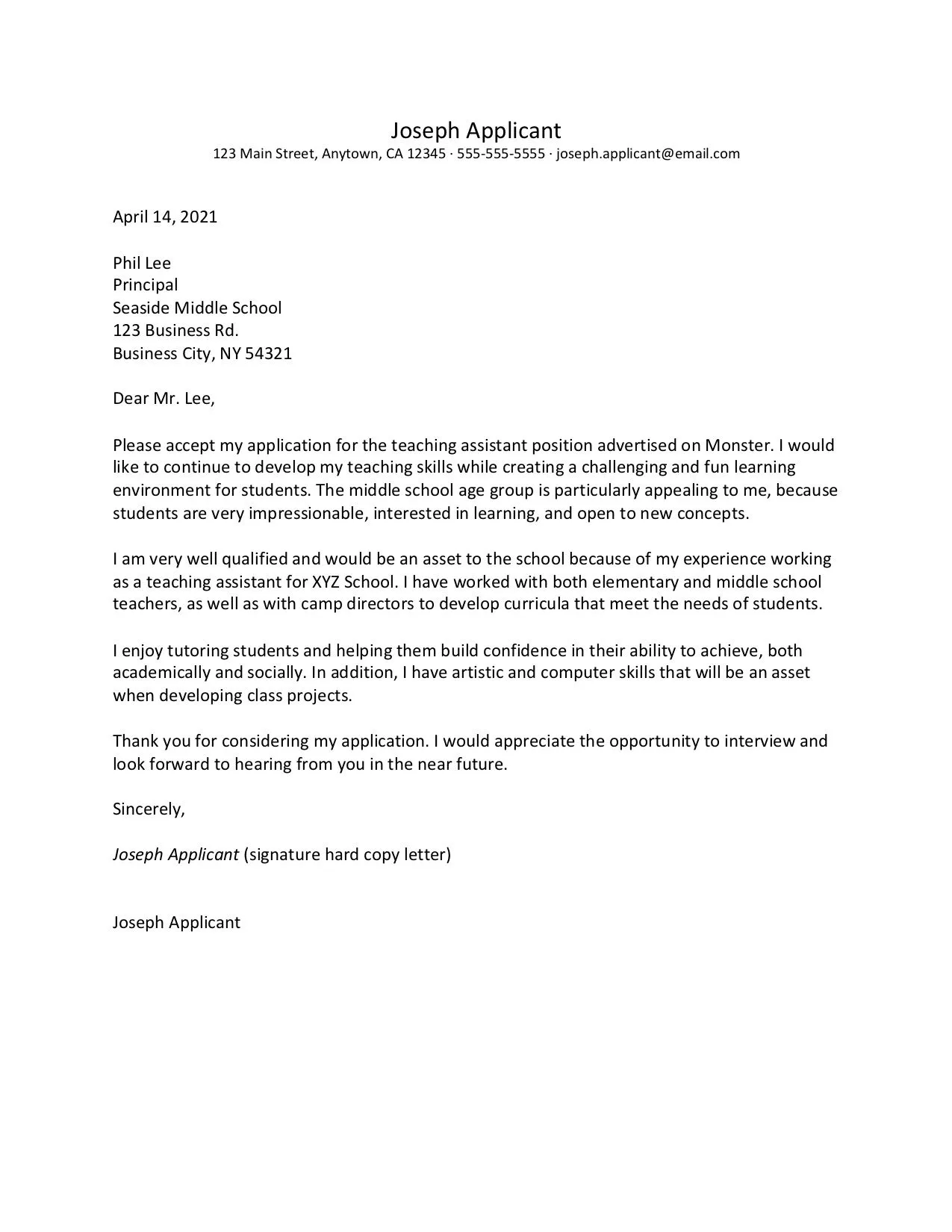
Always address your cover letter to a specific person, whenever possible. Research the school’s website or LinkedIn to find the hiring manager’s name or the principal’s name. Addressing the letter to a specific person shows that you’ve taken the time to research the position and school, and also indicates your initiative. If you are unable to find a specific name, use a professional salutation such as “Dear Hiring Committee” or “Dear Principal”. Avoid generic greetings.
Opening Paragraph Grab Attention
The opening paragraph is your first chance to grab the hiring manager’s attention. Start with a strong statement that captures their interest. State the position you’re applying for and where you found the job listing. Briefly summarize why you are excited about the opportunity and mention something specific that attracted you to the school. You can include a brief, compelling anecdote or a concise statement of your teaching philosophy. Always maintain a positive and enthusiastic tone. Your goal is to make the reader want to learn more about you.
Highlighting Your Qualifications and Experience
The body of your cover letter is where you highlight your qualifications and experience. Focus on the skills and experiences that are most relevant to the teaching position. Describe your achievements, providing specific examples of how you have made a positive impact in the classroom. Tailor this section to the specific requirements and preferences outlined in the job description. Use keywords from the job posting and be clear and concise in your explanations, using action verbs to describe your accomplishments. This helps to make a strong case for your candidacy.
Specific Examples of Teaching Success
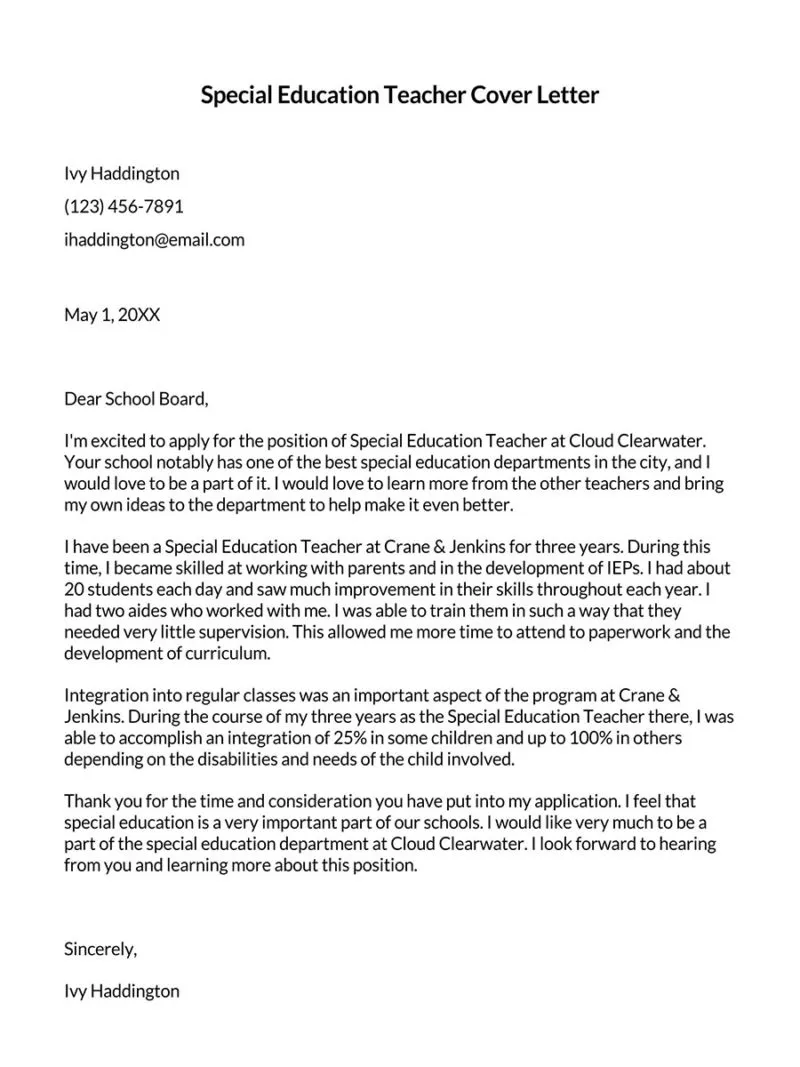
Provide concrete examples of your teaching success. Instead of just stating that you’re a good teacher, describe specific instances where you successfully implemented a new curriculum, improved student test scores, or created an engaging learning environment. Include data to back up your claims whenever possible, such as a percentage increase in student grades or a reduction in disciplinary incidents. Illustrate how you have overcome challenges and adapted to the needs of diverse learners. The more specific your examples, the more credible and impactful your letter will be.
Quantifiable Achievements in the Classroom
Use quantifiable data to demonstrate your accomplishments. For instance, instead of saying “I improved student engagement”, say “I increased student engagement by 20% through the implementation of project-based learning.” Use numbers to show the impact of your teaching methods and programs. Other examples include the number of students who passed a standardized test, the number of professional development hours completed, or the number of parents involved in school activities. Measurable achievements help you to build your case by showing the impact of your actions in the classroom.
Demonstrating Your Skills and Abilities
Clearly demonstrate your key teaching skills and abilities. Be sure to focus on skills that are relevant to the specific teaching position, such as classroom management, curriculum development, and differentiated instruction. Use action verbs to highlight what you have done. Show how you have used your skills to solve problems, improve student outcomes, and create a positive learning environment. Provide examples of how you collaborate with colleagues, communicate with parents, and adapt to different teaching styles and techniques.
Classroom Management Expertise
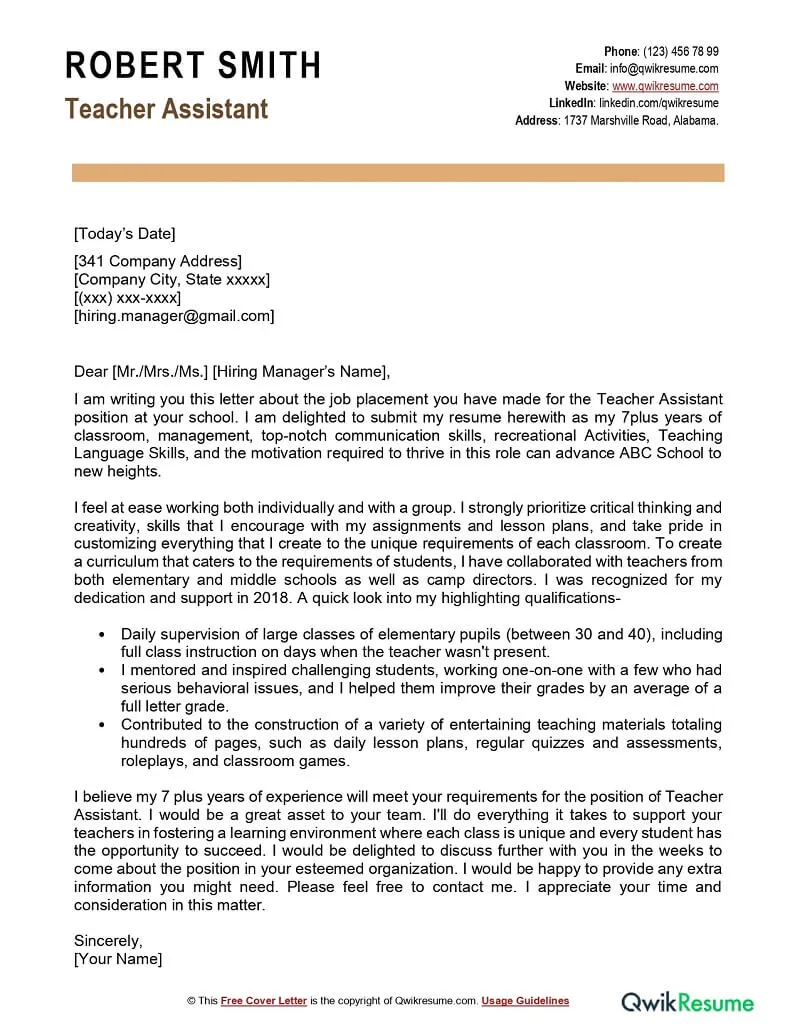
Highlight your classroom management expertise. Discuss your approach to creating a structured, positive, and engaging learning environment. Describe the strategies you use to maintain student behavior, promote respectful interactions, and handle disruptions. Mention any specific classroom management programs or techniques you employ. Share how you implement rules and routines effectively. Discuss how you create a safe and inclusive environment where all students feel valued and supported.
Curriculum Development and Implementation
Showcase your skills in curriculum development and implementation. Describe your experience in creating lesson plans, adapting curriculum materials, and designing engaging activities that meet the needs of diverse learners. Emphasize how you align your lessons with state standards and school-wide goals. Discuss any special projects you’ve developed or implemented. Provide examples of how you assess student learning and adjust your teaching methods based on the data.
Passion for Education and Student Success
Demonstrate your passion for education and your commitment to student success. Express your genuine enthusiasm for teaching and your desire to make a positive impact on students’ lives. Share your teaching philosophy and beliefs about education, and explain how you motivate students to learn and achieve their full potential. Mention how you create a supportive and inclusive classroom environment. Show that you are enthusiastic about making a difference in students’ lives.
Expressing Enthusiasm and Fit for the School
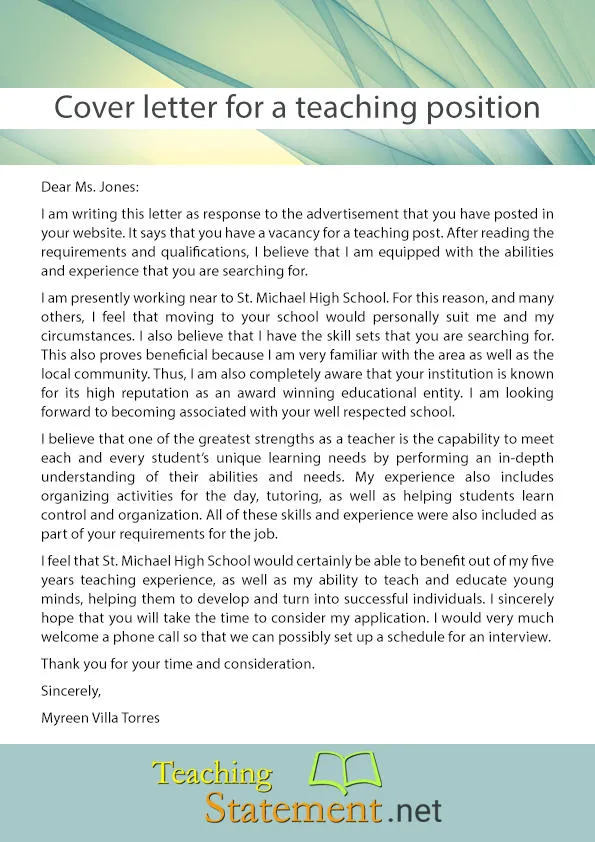
In your cover letter, show genuine enthusiasm for the specific school or district where you are applying. Explain why you are interested in working there and what attracts you to its mission, values, and programs. Reference any specific initiatives or programs that resonate with you. Briefly describe how your skills and experiences align with the school’s needs and goals. Show that you are a good fit for the school culture and community. Highlighting your interest will demonstrate that you are a good fit and will make your application stand out.
Closing the Letter with a Call to Action
End your cover letter with a clear call to action. Express your interest in an interview and state your availability. Reiterate your enthusiasm for the position and thank the hiring manager for their time and consideration. Provide your contact information again for easy reference. Be polite and professional, and conclude by expressing your hope to hear from them soon. A well-written call to action encourages the hiring manager to move forward with your application.
Formatting and Proofreading Your Cover Letter
The way you format and proofread your cover letter is just as important as the content itself. A well-formatted and error-free letter demonstrates your attention to detail and professionalism. Proper formatting and proofreading contribute to making a strong first impression. Taking the time to format correctly is as important as the text that you write.
Formatting Tips for Readability
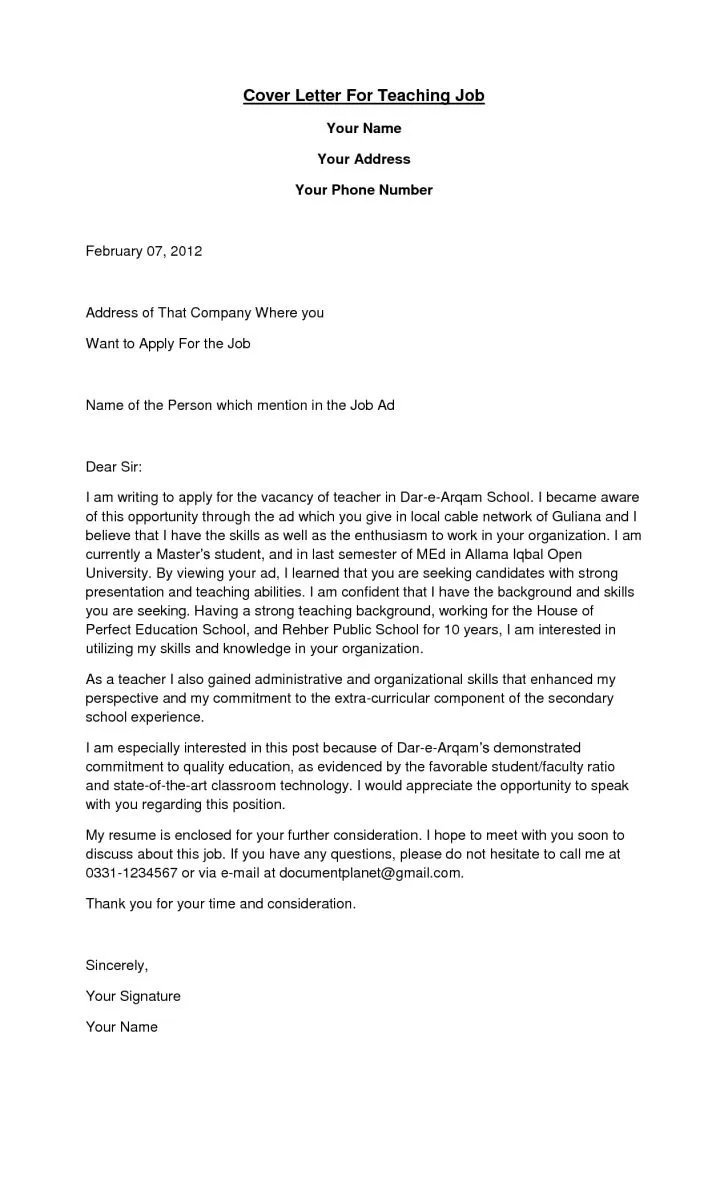
Use a professional and readable font, such as Times New Roman, Arial, or Calibri, with a font size between 10 and 12 points. Use standard 1-inch margins and single-space the body of your letter. Use paragraph breaks to make the letter easy to read. Ensure your letter is well-organized, using clear headings and subheadings to break up the text. Keep paragraphs concise and focused. The overall format should be clean and visually appealing.
Proofreading for Errors
Carefully proofread your cover letter for any grammatical errors, spelling mistakes, or typos. Use a grammar checker and a spell checker, but don’t rely on them completely. Read the letter aloud to catch any awkward phrasing or sentence structure. Ask a friend, family member, or career counselor to review your letter for a fresh perspective. Ensure that the tone and style of the letter are professional and appropriate for the position.
Tailoring Your Cover Letter for Each Position
Avoid using a generic cover letter. Customize your letter for each teaching position you apply for. Tailoring your letter demonstrates that you are genuinely interested in the specific school and the role. Customization is key to demonstrating your suitability for the position.
Researching the School and its Values
Research the school thoroughly before writing your cover letter. Visit the school’s website to learn about its mission, values, programs, and initiatives. Review the school’s social media pages, such as Facebook or Instagram, to gain insights into its culture. If possible, speak with current teachers or parents to gather additional information. The more you know about the school, the better you can tailor your letter to demonstrate your fit.
Customizing Your Letter to Match the Job Description
Carefully review the job description and identify the key qualifications and requirements. Tailor your cover letter to address those specific requirements. Use keywords from the job description to show you understand what the school is looking for. Highlight the skills and experiences that are most relevant to the position. Provide examples that demonstrate your ability to meet the needs of the job. Customization shows you’ve read and understood the requirements.
